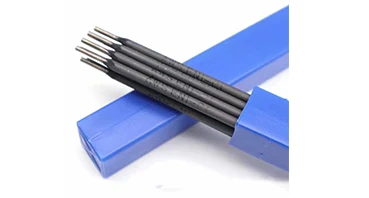what rod to weld stainless to mild steel
Feb . 16, 2025 04:23
Welding is a nuanced art that requires understanding both materials and techniques to ensure structural integrity and durability. One of the common challenges faced by welders is joining dissimilar metals, such as stainless steel and mild steel. These metals have different properties, and using the right welding rod is crucial for achieving a strong and lasting weld joint.
- Surface Preparation Thoroughly clean both the stainless steel and the mild steel to remove any grease, rust, or debris. Contaminants can lead to weak welds or porosity. - Fit-up Ensure the parts to be joined have an accurate and consistent fit. Misalignment can create areas of weakness where stress might concentrate. - Preheating Although not always required, preheating mild steel can sometimes reduce thermal shock and contribute to an even temperature distribution, minimizing the risk of distortion. Once these preparatory steps are complete, welding can proceed with the following considerations - Welding Technique Utilize short, controlled weld passes to avoid excessive heat buildup. Managing heat input is crucial to maintaining structural integrity and appearance. - Post-weld Treatment Depending on the application's requirements, post-welding heat treatment or passivation might be necessary to enhance corrosion resistance and eliminate internal stresses. A well-executed weld not only combines the technical prowess of the welder and the optimal use of resources but also extends the life and reliability of the metal structure. By leveraging the qualities of the 309L electrode, professionals can confidently tackle projects requiring the union of stainless steel and mild steel, ensuring the final structure meets both aesthetic and functional standards. Furthermore, adhering to established safety protocols is imperative. Proper protective gear including gloves, goggles, and fire-resistant clothing must be worn at all times to mitigate the inherent risks of welding activities. In conclusion, choosing the right welding rod is more than a technical decision—it's integral to achieving a high-quality weld that fulfills both the client's and the engineer's expectations. With the 309L rod, welders possess a formidable tool in their arsenal, capable of bridging the gap between stainless and mild steel with efficiency and reliability.


- Surface Preparation Thoroughly clean both the stainless steel and the mild steel to remove any grease, rust, or debris. Contaminants can lead to weak welds or porosity. - Fit-up Ensure the parts to be joined have an accurate and consistent fit. Misalignment can create areas of weakness where stress might concentrate. - Preheating Although not always required, preheating mild steel can sometimes reduce thermal shock and contribute to an even temperature distribution, minimizing the risk of distortion. Once these preparatory steps are complete, welding can proceed with the following considerations - Welding Technique Utilize short, controlled weld passes to avoid excessive heat buildup. Managing heat input is crucial to maintaining structural integrity and appearance. - Post-weld Treatment Depending on the application's requirements, post-welding heat treatment or passivation might be necessary to enhance corrosion resistance and eliminate internal stresses. A well-executed weld not only combines the technical prowess of the welder and the optimal use of resources but also extends the life and reliability of the metal structure. By leveraging the qualities of the 309L electrode, professionals can confidently tackle projects requiring the union of stainless steel and mild steel, ensuring the final structure meets both aesthetic and functional standards. Furthermore, adhering to established safety protocols is imperative. Proper protective gear including gloves, goggles, and fire-resistant clothing must be worn at all times to mitigate the inherent risks of welding activities. In conclusion, choosing the right welding rod is more than a technical decision—it's integral to achieving a high-quality weld that fulfills both the client's and the engineer's expectations. With the 309L rod, welders possess a formidable tool in their arsenal, capable of bridging the gap between stainless and mild steel with efficiency and reliability.
Related Video
Copyright © 2025 Dingzhou Jinlong Metal Production Co., Ltd. All Rights Reserved. Sitemap | Privacy Policy




























